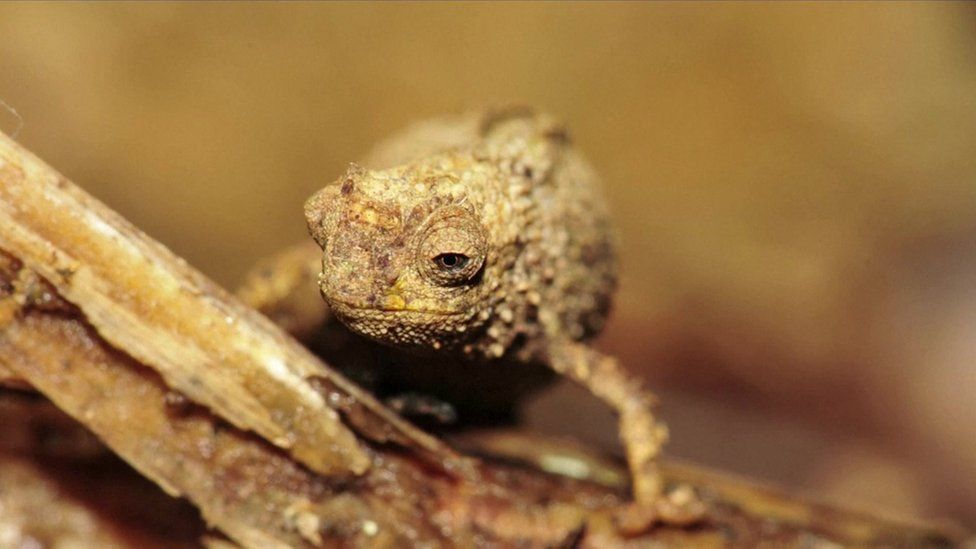Brookesia Nana, also known as the nano-chameleon is the world’s smallest reptile. It is a chameleon but Brookesia nana does not change colors. It is a species of chameleon endemic to montane rainforests in northern Madagascar.
Madagascar is home to some of the tiniest animals on earth. There are numerous extremely miniaturized vertebrates in Madagascar, including the smallest primates and some of the smallest frogs in the world.

The species was discovered by herpetologist Frank Glaw and other German researchers in 2012 in northern Madagascar. Frank Glaw, classified the new species and named it Brookesia nana. It is at least 1.5 millimeters smaller than the previous record-holder, another member of the Brookesia family, the Brookesia Micra.
The Brookesia Micra was previously thought to be the world’s Smallest reptile until the Brookesia nana was discovered in 2012. The Brookesia nana is roughly the size of our fingertips it can easily sit on a matchstick comfortably. It is so small that at first glance it may look like a little insect crawling on the ground.

Camouflage is a valuable trait for reptiles especially for chameleons to survive from predators. But the Brookesia nana does not change color so it uses its natural skin color to blend in with dry leaves and ground.
Brookesia Nana size
The male Brookesia nana, or nano-chameleon, has a snout-vent length body of just 13.5mm. Its length from tip to tail is 22mm. This makes it the smallest of about 11,500 known species of reptiles.
Like other Brookesia species, females are generally larger than males. The females were far bigger at around 29mm with a 19.2 mm snout-vent length. The researchers found that the genitals of the Brookesia nana specimen were almost one-fifth of its body size, possibly to allow it to mate with the larger female. A micro-CT scan performed on the female revealed developing eggs in the body cavity, likewise indicating sexual maturity.

The chameleon is only known to be found in the montane rainforest in northern Madagascar and might be threatened by extinction. Brookesia nana’s habitat has been subject to deforestation, the area was placed under protection recently, so the species may survive and we can learn more about them.
Very little is known about this species and scientists are still debating on whether it is the world’s smallest reptile or not.
“I have few doubts it’s an adult male,” Glaw said. “If we had a pair mating it would obviously be better proof.” Confirming Brookesia nana as the smallest reptile species will require finding more of them, which might take several years, he said.

